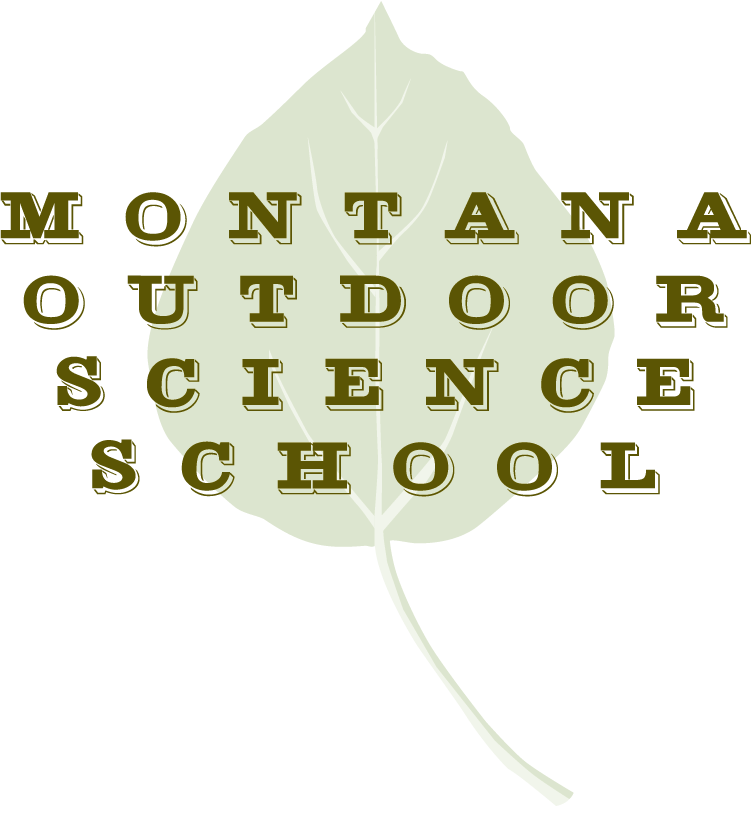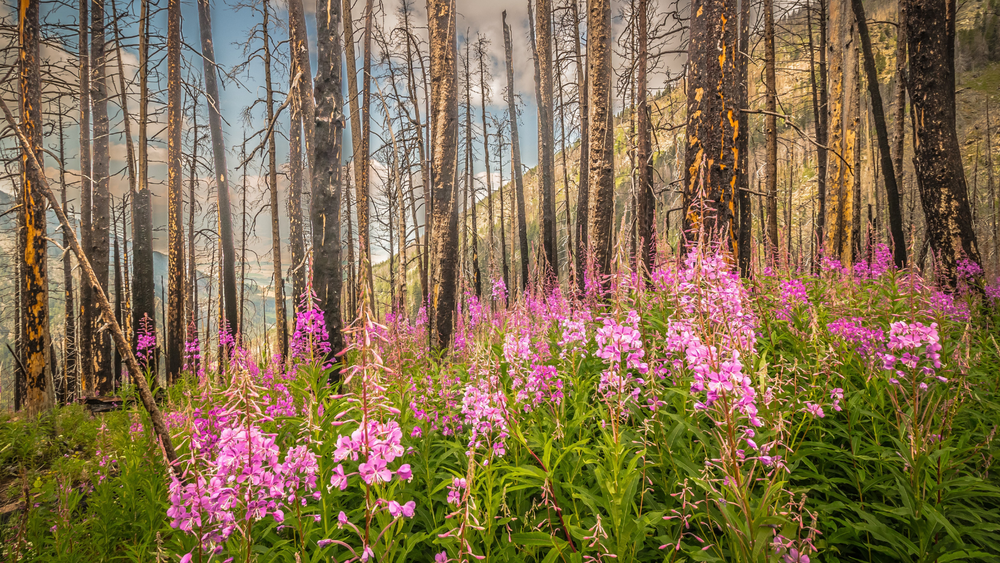What Happens After A Wildfire!
By Eden Potratz
MOSS Field Note # 8
Fireweed in a burn area of the Absaroka-Beartooth Wilderness area. Photo by BMSwanson
I grew up in the era of “Stop-Drop-and-Roll”. If I ever found myself on fire, I was to stop whatever I was doing, drop to the ground, and roll-roll-roll until that fire was smothered. As a child, I believed I was in far greater peril of catching fire than I actually was. I always wondered, though, after I stopped-dropped-and-rolled, what then? What happens after the fire is extinguished?
The same thought echoed through time as I recently had the opportunity to hike to Passage Creek Falls in Park County/Paradise Valley with my fellow Master Naturalist Classmates. Fifteen years after the Wicked Creek fire tore through this canyon, the remnants of fireweed, now dormant and dry for the season, still proliferate the area. Young lodgepole pines dot the landscape on each side of the trail, stepping high up the hillsides. I saw charred dead trees, or snags, still standing tall, now evidencing their repurposed role to provide food and shelter for insects and birds alike.
What exactly happened here after the fire died out? Is it fair to say that a landscape is “destroyed” by a fire? How does the now-scarred ecosystem change and begin to repropagate after it’s been ravaged by intense heat? And when does it start? How does fire, a regular and often naturally occurring event, benefit our environment?
Despite the harsh and stark appearance, all is not lost after a wildfire. Because of their reduced number, surviving trees and shrubs no longer compete for nutrients, light, and water. In fact, they may even show accelerated growth, as they benefit from the minerals in the soil that the fire left behind. Some plant life may increase in health as fire rids them of infesting parasites, like the dwarf mistletoe on the lodgepole pine.
Below ground, root systems of grasses, ferns, and forbs, like Horsetail and Fireweed, typically remain undamaged. These organisms may increase in productivity in the years to follow because of the nutrients left behind when the above-ground parts and other forest litter were consumed by the fire. The rebound of these flora communities can begin as soon as they receive moisture, which may be within days at some sites.
Quaking Aspens connect to each other by a network of underground roots that can survive very hot fires. Although the trunks above ground may be killed, fire stimulates the roots to sprout new suckers, and the fire leaves behind bare mineral soil perfectly suited to establish the new seedlings.
Lodgepole pines produce serotinous cones, sealing in their seeds with an external resin that only melts in a temperature of at least 113°F (45°C). As fire consumes the litter on the forest floor and creates an open canopy allowing in plenty of sunlight, it also melts the resin. This adaptation ensures the seeds only disperse when a fire creates conditions favorable to establish these new seedlings.
Cavity-nesting birds, like Northern Flickers, Mountain Bluebirds, and Black-Capped Chickadees scout out new habitat in fallen logs and burned-out snags. The dead wood also provides a good food source for insects, like wood-boring beetles, and an important habitat for laying their eggs. In turn, these insect larvae offer a hearty food source to birds like Hairy Woodpeckers. Nearly synonymous with burned forests, the Black-Backed Woodpecker specializes in locating burned forests just weeks to months after a forest fire and will live off the bounty of these insects over the next several years.
What happens after a wildfire may seem devastating at first, but plant communities dependent on a clean forest floor, nutrient-rich soil, and open canopy, have new opportunity to grow. The renewed habitat created by the fire teems with new life, new residents, and increased biodiversity. It’s a whole new world.
Resources:
https://www.allaboutbirds.org/guide/Black-backed_Woodpecker
https://www.nps.gov/yell/learn/nature/ecological-consequences-of-fire.htm
https://www.nps.gov/yell/learn/nature/fire.htm
https://www.fs.usda.gov/detail/custergallatin/news-events/?cid=STELPRDB5202883
https://www.fs.usda.gov/Internet/FSE_DOCUMENTS/fseprd575963.pdf
https://www.esa.org/esa/wp-content/uploads/2012/12/fireecology.pdf


